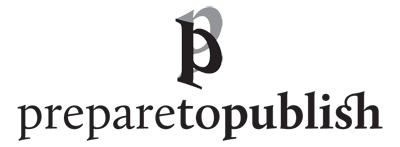I was contacted by an author who told me: I have self-published a handful of books over the years with KDP and Kobo (fiction and non-fiction). I make sales every month but nothing has really done well. Can you explain a little about Amazon Ads and do you think they are worth gambling money on?
I’ll start this answer with a caveat that I often give: I’m not a marketing expert – I help people get from first draft to publication. But of course I talk to authors all the time, and have direct experience of using Amazon Ads. A second caveat would inevitably be to say that self-publishing is a long, hard game and there are rarely easy wins!
There are some notable advantages and benefits of Amazon ads:
- you can target the ads to very specific customer interests/searches
- they don’t cost much to try
- you only pay when someone buys the book, not when they click the ad (as at some other online advertising platforms)
- you get very useful data on each ad’s performance.
That first point is very important: the more targeted your advertising keywords are, the more likely it is that customers will see your book ad, and hopefully buy it. This also applies to the keywords and categories you use when setting up a book with KDP, of course – but there is one interesting difference. Amazon doesn’t let you use other authors’ names or book titles in your standard keywords – but it does with the advertising program. So if you think your book would appeal to a specific author’s audience, you can try setting up ads targeted to anyone who searches for that author’s name or books (of course, if they are a major name the cost will be higher and your chances of success lower due to other people trying the same thing!) – of course, you’d also want to use subject or genre-related keywords too.
Everything about targeting your ads comes down to what book buyers are likely to put into the search field at the top of the site. This can sometimes be surprisingly specific (and specificity is the crux of all this, really). There are (expensive) tools out there which can help with this research – but I will write something more detailed about this sort of research in a future newsletter. The simple, free thing to try first is just start typing in a potential keyword in the search box, and Amazon’s autocomplete will show you up to 10 similar things that real customers type in.
Effective use of Amazon ads is a numbers game. There are different ways to approach this but I prefer looking at ACOS – the ‘advertising cost of sales’ figure provided by Amazon in the ad platform’s reporting tools. This is expressed as a percentage, calculated by dividing what you are spending by the revenue generated from ad-generated sales. But what people often gloss over is that that revenue is not what you actually earn! The retailing percentage and your printing costs (or ebook delivery costs) come out of that revenue. My general rule of thumb for my own publishing projects is to aim for an ACOS for a paperback book of lower than 25%. This would generally mean I am at least breaking even on my ad spend or – ideally! – making a profit on it.
If you can find keywords that get a low ACOS, all you need to do is focus on those, turn off those with a high ACOS and in theory you are printing money. But you may be printing money super slowly as really specific keywords won’t be typed in by buyers very often. I know ads can work because I have had success thanks to this platform – but that is in a very specific non-fiction genre where there is clear demand. If you are looking at promoting fiction, the impression I get is that it is much harder to make ads work unless you have a really niche genre (do of course study other books in your genre and see whether other authors within it are using Amazon Ads). ‘General interest’ will not work!
Yes, it’s a gamble as your question suggests – but the advantage is that a lot of data is provided to help you refine your decisions, and it doesn’t cost much to test the water and see where you might get some traction. So I definitely think it’s worth trying – but proceed with caution and just try a small budget to start with and see what you learn from it.
